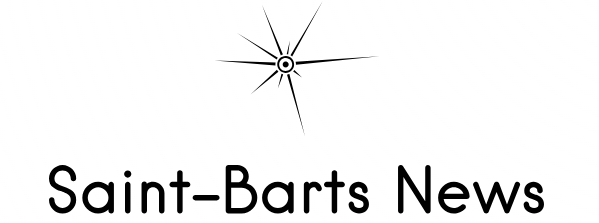:max_bytes(150000):strip_icc():format(jpeg)/Australias-Largest-Airline-Tests-Countrys-Wine-FT-DGTL1025-04-352e0c66b3624a9c8533730e2317ed6a.jpg)
On a beautiful day in August, Qantas’ team of sommeliers is barely making it outside. In Sydney, the Australian airline’s headquarters has the faint smell of a winery seeping through corridors where its crew typically trains for in-flight service. During the 10th annual Wine Week, there’s no room for training: Wine professionals are tasting 1,400 wines from every region across the country.
An array of opened bottles snakes around a tasting room, the source of the aroma. Glassware is arranged on rows of metal tables with tasting placemats, presenting unlabeled tastings of white and red wines from each wine growing region that’s displayed on a map on one wall. Sommeliers are narrowing the nearly comprehensive selection down to the 200 wines worthy of serving on board and in lounges next year.
“We really are the shopfront of the Australian wine industry,” says Neil Perry, creative director of Qantas Food & Beverage. The chef of Margaret Group has worked with the airline since 1997 and brought on Master Sommelier Sebastian Crowther in 2015 who has become the Chairman of the Qantas Wine Selection.
Crowther explains the logistics of the annual endeavor of selecting the wines that will represent the country: Qantas maintains an ever-growing database of Australian wine producers which it emails annually to request wine samples be sent to HQ. The submissions are organized by variety, region, and vintage. During Wine Week, the team of sommeliers tastes through each bracket, such as 2025 Clare Valley Rieslings, followed by 2024, and 2023.
The producers are anonymous (often referred to as a “blind” or unbiased tasting), and the sommeliers use Halliday Wine Companion’s 100-point scoring system, which travelers can spot in wine stores with gold, silver, and bronze medals on bottles.
“We know a kind of classic style that we are looking for from that particular region,” Crowther explains. “Riesling from the Clare Valley is typically an unwooded style. It’s always very fresh and fragrant, always has really great acidity to it. So looking over the years, you’ve kind of built some benchmarks in your mind as to what exactly it is that you’re looking for. That goes for all the regions, so Chardonnay from Margaret River, Shiraz from Barossa Valley, Pinot from Tasmania, etc.”
The group discusses after tasting and scoring to debate the “merits of the wine and whether they think it’s, you know, a classic and a really good example of Pinot Noir from the Yarra Valley in Victoria,” he says.
After a decade, this process has revealed the progression of Australian winemaking.
“In some of the most famous and powerful wine regions in Australia, we’ve seen an evolution in style,” Crowthers recognizes. “Take the Barossa Valley, for instance: It’s a region which has always been known for producing very big, very intense, full-bodied, concentrated styles of red wine. I think in the last decade, we’ve probably seen that shift slightly into a fresher spectrum, fresher food, less on the oak, less on the alcohol. The wines just have a little bit more purity and balance to them.
“When you’re sitting on an airplane, especially if it’s a long flight, I don’t necessarily think you want to be drinking something that’s super alcoholic and really heavy and intense,” he says. “I think those kind of fresher styles make sense in that environment. That’s really what contemporary Australian wine looks like, that fresh, pure, crisp style of wine.”
My flight from Dallas — on Qantas’ superjumbo Airbus A380 — featured a 2023 Clos Clare Watervale Riesling and a 2023 Jim Barry Expression by Tom Barry Riesling from the Eden Valley, both produced in South Australia, with tasting notes and bottle images available on the in-flight screens. Qantas frequent fliers who enjoy a wine on board can either use or earn points to purchase the wine in Australia through the airline’s website.
The wines are paired with Perry’s menus onboard and in airport lounges, where the chef says he aims to bring the same level of hospitality from his world-renowned restaurants. Commending the airline for letting specialists guide everything from interior design and uniforms to coffee and wine, he says Qantas is “really good at taking great advice from people who are experts.
“I think for a big corporation, it’s fantastic for them to really get expertise involved and actually listen.”
Crowthers says he hopes passengers can experience “the stories, and the joy, and the quality of Australian wine,” especially when it’s a small producer’s life’s work.
“It exposes people from overseas to what’s happening in Australia. It’s showing people of the world what we can do,” says Jeffrey Grosset, who’s supplied the airline with Grosset Riesling from the Clare Valley for more than 25 years. “Our outstanding wines are just amazing from a world perspective.”
Grosset adds that on a long flight, people have time to try new wine, and fellow winemaker Adam Lampit agrees. “The hardest thing with the wine industry is getting people to try your wine,” says the Lambrook Wines owner who started making Adelaide Hills wine in his kitchen. “So if we can get people to try the wine, especially when they’re relaxed — a lot of people are going on a holiday or they’ve just come back from a good business meeting, so they’re in a good mood, and they’re trying a wine like that. They’ll actually remember the experience.”
The airline has been serving Lambrook’s cool-climate Sauvignon Blanc and Shiraz for 15 years. “It’s a really great bragging right,” Lampit says. “We do a lot of wine dinners and things like that out in the community, and we always talk about Qantas. We get people saying, ‘You know, if it’s good enough for it to be in the Qantas first class lounge, it’s good enough to be in our lounge.’”
Ashley Day
2025-10-17 14:58:00

